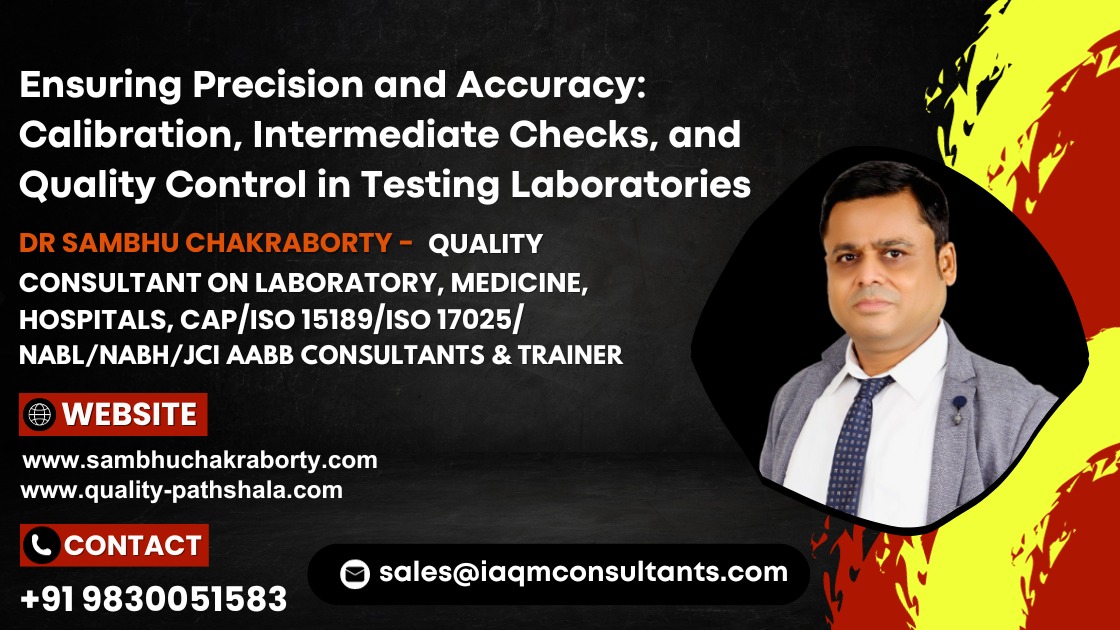In the realm of scientific testing, the accuracy and reliability of measurement data are paramount. Testing laboratories rely on a series of checks and calibrations to uphold the integrity of their results. These include initial calibration, intermediate checks, and ongoing quality control measures. Each plays a distinct role in the quality assurance process as outlined by international standards such as ISO/IEC 17025:2017.
Calibration: The Cornerstone of Measurement Reliability
Calibration is the process of configuring an instrument to provide a result for a sample within an acceptable range. Essentially, it establishes a relationship between a measurement reading and the standard measurement.
Requirement: Instruments should be calibrated before being put into service and re-calibrated according to the manufacturer’s instructions or based on the frequency of use and the stability of measurements. A certificate or report that details the calibration should be kept on file.
Example: An analytical balance might be calibrated using a certified mass. If a 100g standard
mass is placed on the balance, and it reads 100.05g, an adjustment would be made to correct this discrepancy.
Intermediate Checks: Maintaining Calibration Over Time
Intermediate checks are performed to ensure an instrument continues to provide accurate readings between calibrations. These are less comprehensive than full calibrations but are essential for maintaining confidence in instrument performance.
Requirement: The frequency of intermediate checks is determined by factors such as the stability of the measurements, the frequency and manner of use of the equipment, and the risk and impact of incorrect results.
Example: The same analytical balance might be checked weekly using a 50g check weight. If
the balance reads 50.01g, it is considered to be operating within an acceptable range. However, if the reading is 50.2g, this might prompt a full recalibration.
Quality Control Checks: Verifying Continued Performance
Quality control checks are routine procedures that verify the operational status of equipment and the validity of test results. These checks are integral to a laboratory’s internal quality control (QC) procedures.
Requirement: Laboratories must establish QC checks to monitor the validity of tests and calibrations. The results of these checks should be recorded, and rules for dealing with data that falls outside predefined criteria should be in place.
Example: A spectrophotometer used for chemical analysis may have daily QC checks using standard solutions. If the absorbance readings for these standards are within expected ranges, the instrument is considered to be functioning correctly. If not, corrective actions must be taken before any further testing is done.
The Integrated Approach to Quality
Together, calibration, intermediate checks, and quality control checks form an integrated approach to ensuring the accuracy and precision of laboratory measurements. They are critical components of a laboratory’s quality management system, contributing to the validity and comparability of test results. Calibration ensures that equipment is initially set to provide accurate measurements.
Intermediate checks preserve this accuracy over time, while quality control checks validate the continued suitability of the equipment for its intended use.
Conclusion
For testing laboratories, the systematic application of calibration, intermediate checks, and quality control checks is non-negotiable. It’s not just about adhering to standards; it’s about a commitment to excellence and reliability in scientific measurement. By rigorously applying these processes, laboratories can guarantee the consistency and dependability of their data, fostering trust among clients and stakeholders alike.
About the author
Dr. Sambhu Chakraborty is a distinguished consultant in quality accreditation for laboratories and hospitals. With a leadership portfolio that includes directorial roles in two laboratory organizations and a consulting firm, as well as chairmanship in a prominent laboratory organization, Dr. Chakraborty is a respected voice in the field. For further engagement or inquiries, Dr. Chakraborty can be contacted through email at director@iaqmconsultants.com and info@sambhuchakraborty.com. Additional resourcesand contact information are available on his websites, https://www.quality-pathshala.com and https://www.sambhuchakraborty.com, or via WhatsApp at +919830051583

Great blog!
What’s the relationship between Calibration, linearity and AMR?
When we check AMR, can we say that Calibration is also performed?
Sometimes the engineers just change a factor in analyser and say that the calibration is correct now; is this a good practice?
Thanks
There’s something mesmerizing in the way you bring clarity to complex concepts, making them feel like second nature.